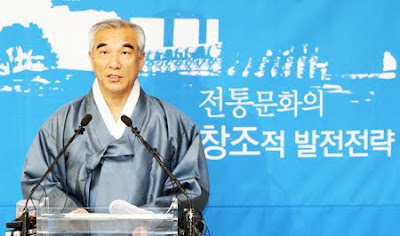
Culture Minister Choe Kwang-shik a scholar of Korean history, has been an ardent promoter of Korea’s traditional culture.During his term, one of his main goals is to promote Korea’s traditional arts and challenge the perception some people have that “hallyu” is limited to K-pop and TV dramas.
“There is more interest in traditional Korean culture because of the spread of hallyu,” Minister of Culture, Sports and Tourism Choe said during a press conference Monday. “So far, the phenomenon has mostly revolved around Korea’s popular culture. Now we must think about what we can do to engage our traditional culture as a foundation for hallyu.”
An ad-hoc organization was launched Monday within the ministry to that purpose.
“The time has come for us to work toward a new wave of hallyu that spurs global interest in our traditional culture, arts, sports and literature,” Choe said. “We hope to gradually achieve this through more cultural exchanges with other countries.”
To step up efforts to promote Korean culture abroad, the ministry will also expand the number of Korean culture centers in foreign countries.
Up till now, the Korea Culture and Information Service (KOCIS) runs 21 centers but the number will expand to 24 by the end of 2012, in light of the growing popularity of Korea’s popular culture.
In the first half of 2012, Hungary, Mexico and India will open Korean cultural centers. There are plans to establish centers in Thailand, Belgium, Brazil and Egypt. Choe visit Hungary to open the facility there in February.
The ministry also announced a series of policy goals to promote hallyu, including the redecorating of public buildings and Korean diplomatic missions to give them a more traditional look and creating spaces within airports and major hotels to promote the nation’s traditional culture.
The ministry will also set up a new promotional center for “hanbok” (traditional Korean dress) and incorporate more classes on traditional arts in the school curriculum.

No comments:
Post a Comment